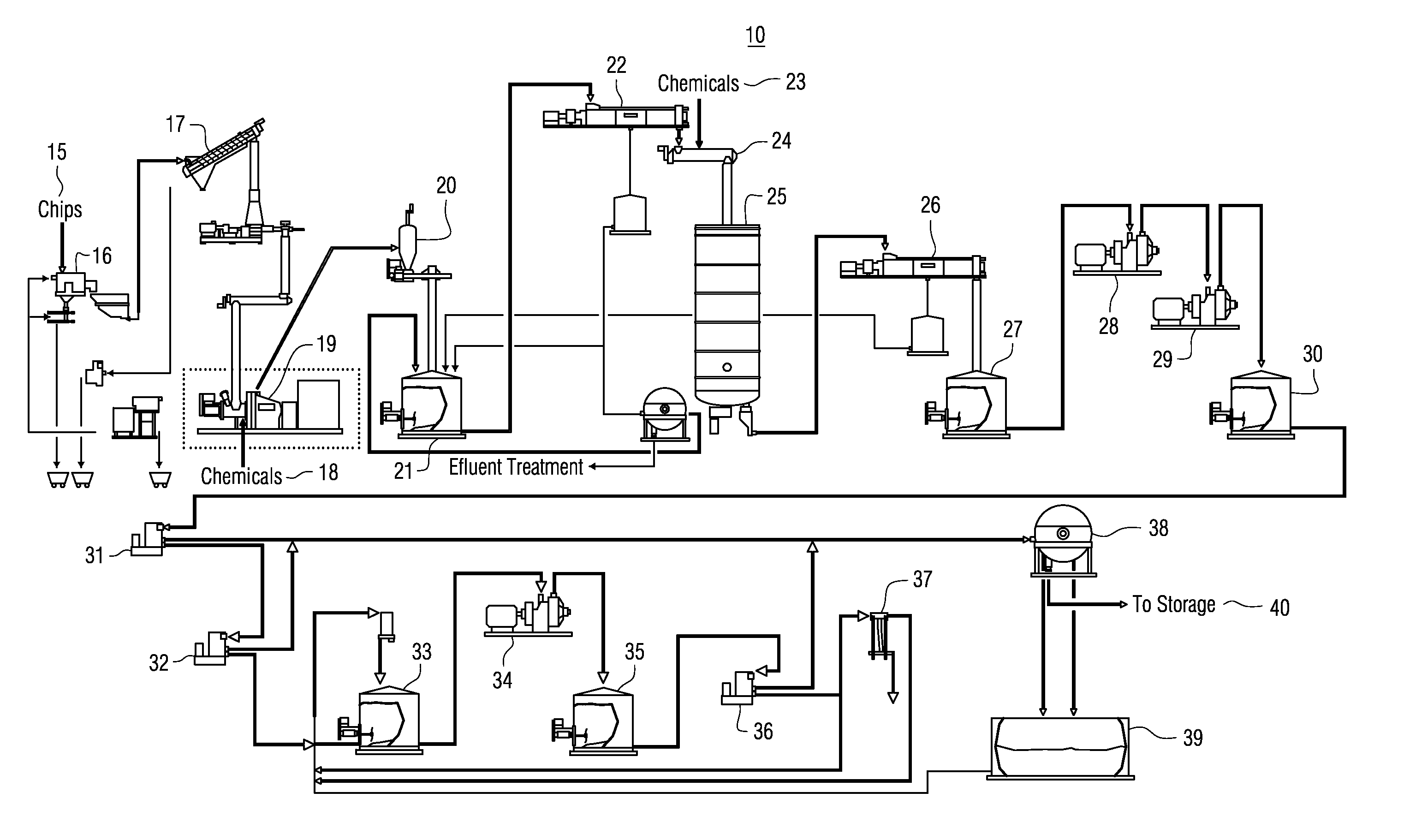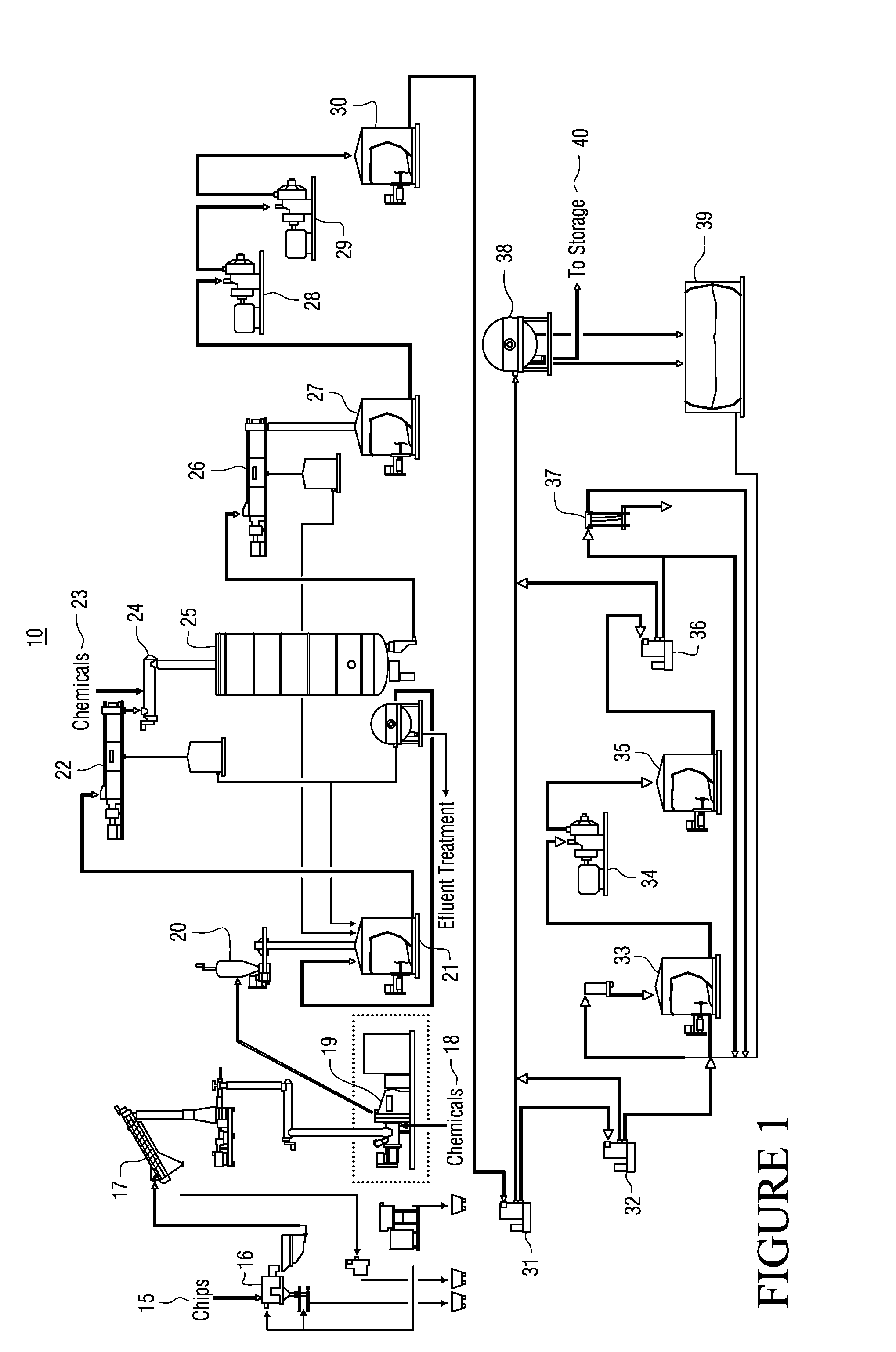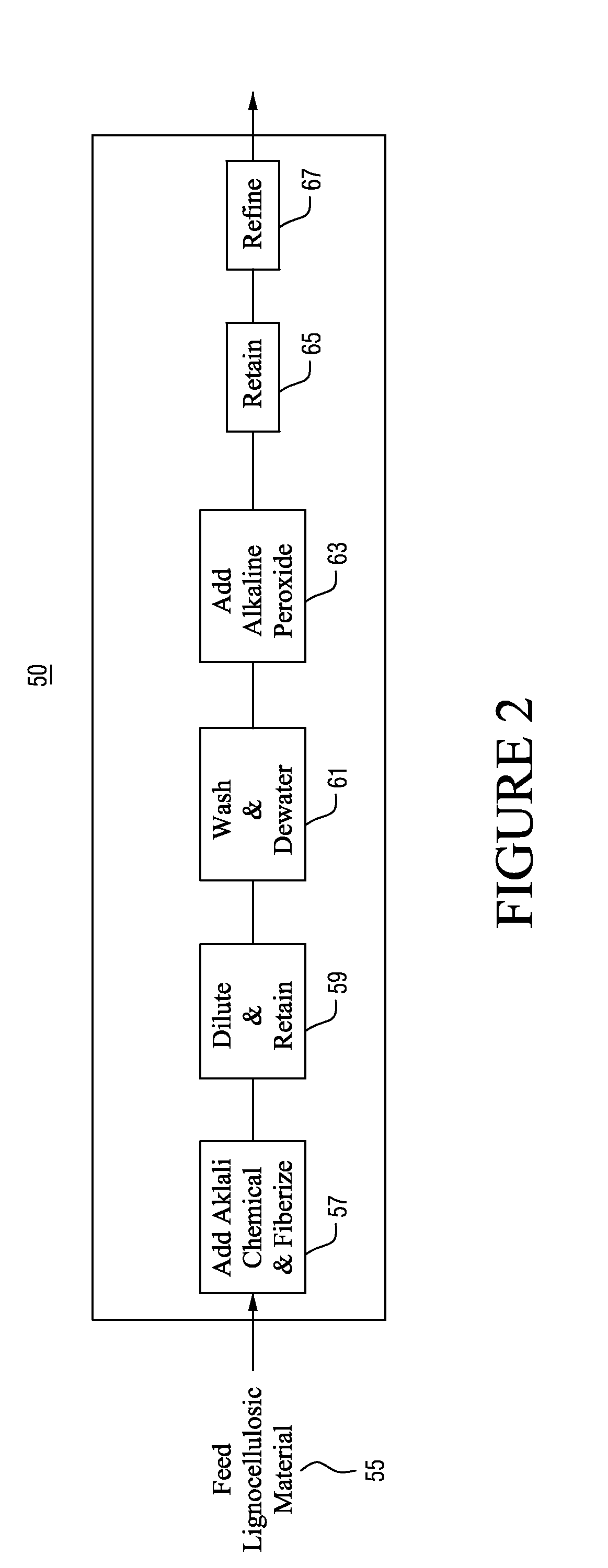Chemical treatment of lignocellulosic fiber bundle material, and methods and systems relating thereto
- Summary
- Abstract
- Description
- Claims
- Application Information
AI Technical Summary
Benefits of technology
Problems solved by technology
Method used
Image
Examples
Embodiment Construction
[0015]FIG. 1 schematically illustrates a system 10. The lignocellulosic material enters the system via line 15 (e.g., wood chips, or “chips” as well as other material having lignin and cellulose) may enter a chip washer 16 to remove impurities. The washed lignocellulosic material may then enter a dewatering screw 17, with or without pressure, to remove excess liquid before entering a fiberizer 19. Another embodiment of the system may not include a washer 16 and dewatering screw 17, or may include other devices configured to perform impurities removal from the lignocellulosic material. Another embodiment of the system may also include a steaming device configured to receive and steam the lignocellulosic material upstream from the fiberizer 19. The lignocellulosic material received by the fiberizer 19, with or without undergoing steam and wash, is not chemically impregnated, and may not undergo compression by a compression device, maceration by a compression device, or a combination t...
PUM
| Property | Measurement | Unit |
|---|---|---|
| Fraction | aaaaa | aaaaa |
| Fraction | aaaaa | aaaaa |
| Fraction | aaaaa | aaaaa |
Abstract
Description
Claims
Application Information
 Login to View More
Login to View More - R&D
- Intellectual Property
- Life Sciences
- Materials
- Tech Scout
- Unparalleled Data Quality
- Higher Quality Content
- 60% Fewer Hallucinations
Browse by: Latest US Patents, China's latest patents, Technical Efficacy Thesaurus, Application Domain, Technology Topic, Popular Technical Reports.
© 2025 PatSnap. All rights reserved.Legal|Privacy policy|Modern Slavery Act Transparency Statement|Sitemap|About US| Contact US: help@patsnap.com



